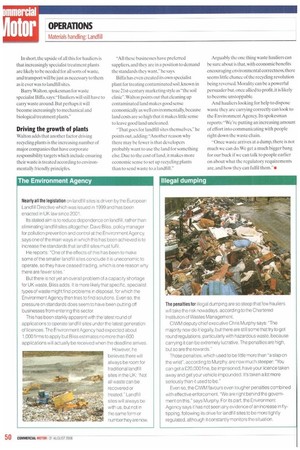The Environment Agency
Page 50

If you've noticed an error in this article please click here to report it so we can fix it.
Nearly all the legislation on landfill sites is driven by the European Landfill Directive which was issued in 1999 and has been enacted in UK law since 2001.
Its stated aim is to reduce dependence on landfill, rather than eliminating landfill sites altogether. Dave Bliss, policy manager for pollution prevention and control at the Environment Agency. says one of the main ways in which this has been achieved is to increase the standards that landfill sites must fulfil.
He reports: "One of the effects of this has been to make some of the smaller landfill sites conclude it is uneconomic to operate, so they have ceased trading, which is one reason why there are fewer sites."
But there is not yet an overall problem of a capacity shortage for UK waste, Bliss adds. It is more likely that specific, specialist types of waste might find problems in disposal, for which the Environment Agency then tries to find solutions. Even so, the pressure on standards does seem to have been putting off businesses from entering this sector.
This has been starkly apparent with the latest round of applications to operate landfill sites under the latest generation of licences. The Environment Agency had expected about 1,000 firms to apply but Bliss estimates no more than 600 applications will actually be received when the deadline arrives.
However, he believes there will always be room for traditional landfill sites in the UK: Not all waste can be recovered or treated." Landfill sites will always be with us, but not in the same form or number they are now.


















































































































































































